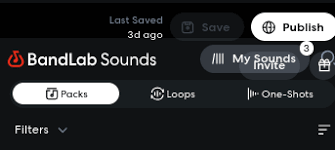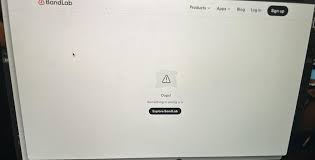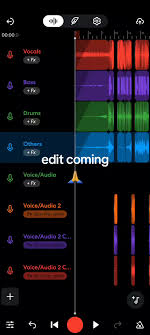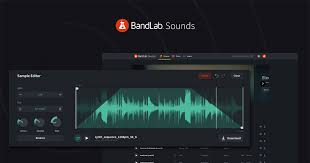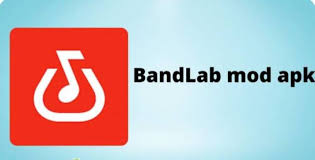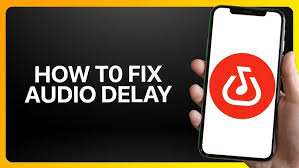Jumpstyle isn’t dead—it’s evolving. Whether you're an old-school fan of Brennan Heart or just discovered the genre through TikTok edits, you're probably wondering: how to make a jumpstyle kick on BandLab?
While BandLab is primarily known for pop, hip-hop, and lo-fi production, it’s surprisingly capable when it comes to harder dance styles like Jumpstyle, Hardstyle, and Gabber. In this guide, we’ll walk you through the exact steps to create that signature distorted, punchy jumpstyle kick using BandLab’s built-in tools and some creative sound design tricks.
You don’t need expensive VSTs or plugins—just a BandLab account, headphones, and some time to experiment.
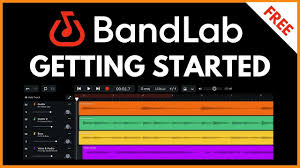
What Makes a Jumpstyle Kick Unique?
Before diving into BandLab, let’s break down what makes a jumpstyle kick different from typical EDM kicks:
Heavy distortion with rich upper harmonics
Short to mid-length envelope (punchy, not boomy)
Rooted in pitched tones—usually tuned to match the track’s key
Often layered with a sub-kick and “tok” transient or click
Sharp attack followed by rapid decay
It’s that hard, driving sound you hear in tracks by Headhunterz, Showtek (early era), or DJ Coone—and it’s essential for driving energy in jumpstyle choreography.
Step-by-Step: How to Make Jumpstyle Kick on BandLab
Let’s go through the exact steps for designing a jumpstyle kick from scratch inside BandLab’s Mix Editor.
1. Start with a Clean Kick Sample
Even though we’re going to distort and shape it, starting with a clean, punchy kick sample gives you more control.
How to find one in BandLab:
Click “+ Add Track” → Select Sampler
Browse BandLab Sounds → Search for “Clean Kick” or “Hard Kick”
Recommended: Look under Dance, Techno, or Hardcore sample packs
Drag it into your timeline and loop it over 4–8 bars
Pro tip: Choose a kick that has no reverb or tail. A dry, short kick works best for layering and distortion.
2. Distort the Kick Using Effects
Jumpstyle kicks are all about distortion. BandLab gives you several distortion units you can combine:
Open the Effects tab on your kick track
Add the “Overdrive” effect → Turn up Gain to 80–100%
Add “Tube Drive” → Set Warmth to mid-high
Add “Grit” (found under Guitar Amps) → Experiment with tone
Optional: Stack Overdrive twice for heavier saturation
You’ll start hearing that familiar crunchy, textured sound. But we’re not done yet.
3. Add Pitch Envelopes with Automation
One trick jumpstyle producers use is pitch automation to give the kick that “donk” or “tok” feel. While BandLab doesn’t offer synth envelopes, you can manually create the effect:
Duplicate your kick to another track
On the second kick, apply Pitch Shift → Raise by +7 semitones
Use volume automation to make it fade in quickly and fade out
Align this pitch-shifted layer slightly before or right on the attack of the main kick
It’s a cheat, but it works—and sounds shockingly close to a real layered tok kick.
4. Layer a Sub Bass for Weight
To give your kick real body, layer it with a sine wave or sub.
Here’s how on BandLab:
Add a new track → Choose Instruments → “Bass Synth” or “808 Sub”
Play a sustained single note (e.g., C2 or the root of your track) that aligns with each kick
Apply compression to glue both layers together
Use EQ to cut sub overlap between 30–60Hz if needed
Now you’ve got that low-end thump that drives the rhythm.
5. Fine-Tune with EQ and Compression
Now that you have a distorted kick with sub and top layers, time to mix:
Use Graphic EQ to boost around 120–180Hz and 4kHz for clarity
Cut any muddy frequencies (200–400Hz dip)
Add Multiband Compressor to control boominess
Optionally apply Limiter to glue and boost loudness
Your final result should be:
Punchy on headphones
Tight, fast-decaying tail
Able to stand on its own in a 1-bar loop
Bonus: Export and Reuse as a Jumpstyle Kick Sample
If you love the result, export it as a WAV or MP3 for future use:
Solo the kick track(s)
Click Download Mix → Select WAV or high-quality MP3
Save as “JumpstyleKick_C#_Clean” for later production
Now you have your own jumpstyle sample made on BandLab—no FL Studio needed.
Jumpstyle Kick Template You Can Build From
Here’s a quick BandLab track setup for your future kick design:
| Track Type | Sample / Instrument | FX Chain |
|---|---|---|
| Track 1 (Kick) | Clean Kick Sample | Overdrive → Tube Drive → EQ |
| Track 2 (Tok) | Same Kick, Pitch +7st | Volume Automation → Highpass EQ |
| Track 3 (Sub) | 808 Sub Synth | EQ (Low Boost) → Compressor |
| Track 4 (Glue) | Bus or Master FX | Multiband Compressor → Limiter |
Pro Tips from the Community
Some producers in BandLab’s Discover feed have used the “Hard Trap Kit” and distorted it to emulate jump kicks. Worth checking out.
You can also resample your kick—bounce it, reload it, and distort it again for layering that mimics hardstyle producers’ workflows.
Use low BPM (around 140–145) to give more space for the kick tail to breathe, especially in early-stage jumpstyle remixes.
FAQ: Jumpstyle Kicks on BandLab
Can you really make a jumpstyle kick on BandLab?
Yes. While BandLab doesn’t have dedicated distortion plugins like Serum or Kick 2, its effect chains and layering options are enough to build high-quality kicks with time and ear training.
What key should I make my kick in?
Start with C, C#, or D. Jumpstyle producers often tune kicks to the root note of their bassline or melody.
Is there a way to synthesize kicks directly in BandLab?
BandLab doesn’t have built-in synth kick design (like sine wave manipulation), but you can simulate it using sine bass instruments and smart layering.
Can I remix existing jumpstyle tracks on BandLab?
Yes. Upload stems or acapellas, layer your custom kick underneath, and use BandLab’s mixer to balance. Just be sure to respect copyright if you're using someone else’s track.
Final Thoughts: BandLab Is a Hidden Gem for Jumpstyle Producers
If you’re just starting out and wondering how to make jumpstyle kick on BandLab, don’t underestimate the platform. With clever distortion, layering, and some EQ knowledge, you can build kicks that punch hard enough for any jumpstyle remix.
No paid plugins. No cracked DAWs. Just smart use of BandLab’s tools—and a producer’s ear for energy.
Whether you’re remixing old-school hard trance or building your own hard dance anthem, BandLab has enough power to kickstart your sound.
Learn more about AI MUSIC

